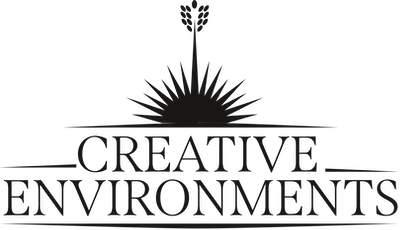Pollinators like bees, butterflies, and hummingbirds are essential to our ecosystems. They facilitate the reproduction of numerous plants and contribute to the production of fruits and vegetables. At Creative Environments Maintenance Services, we understand the importance of attracting these beneficial creatures to your garden. Here’s a comprehensive guide to creating a backyard to attract bees and other pollinators.
1. Plant a Variety of Flowers
Native Plants: Native plants are the best choice for attracting local pollinators. They are adapted to your region’s climate and provide familiar food sources for native bees and butterflies.
Diverse Blooms: Plant a variety of flowers that bloom at different times of the year. This ensures a continuous supply of nectar and pollen. Aim to have flowers blooming in early spring, summer, and fall.
Nectar-Rich Flowers: Choose flowers that are rich in nectar. Popular choices include lavender, bee balm, coneflowers, sunflowers, and asters.
Cluster Planting: Plant flowers in clusters rather than scattering them. Pollinators are more likely to notice and visit groups of flowers, making their foraging more efficient.
2. Provide Water Sources
Birdbaths and Shallow Dishes: Pollinators need water, too. Provide shallow water sources, such as bird baths or dishes filled with water and a few stones for landing spots.
Mud Puddles: Butterflies and some bees need mud for minerals. Create shallow puddles or mud patches in your garden to attract these pollinators.
3. Create Shelter and Nesting Sites
Shrubs and Trees: Plant shrubs and small trees to offer shelter and nesting sites for various pollinators, including birds and butterflies.
4. Avoid Pesticides
Organic Gardening: Pesticides can harm pollinators. Practice organic gardening by using natural pest control methods such as introducing beneficial insects, using neem oil, or companion planting to deter pests.
Integrated Pest Management (IPM): Use IPM strategies to manage pests with minimal impact on pollinators. This approach includes monitoring pest levels, using physical barriers, and applying organic treatments only when necessary.
5. Plant Host Plants for Butterflies
Caterpillar Host Plants: To attract butterflies, provide host plants for their caterpillars. Monarch butterflies, for example, need milkweed for their larvae, while black swallowtails need dill, fennel, and parsley.
Diverse Foliage: Include a variety of host plants in your garden to support different butterfly species and their life cycles.
6. Offer Pollinator Habitats
Hedgerows and Borders: Plant hedgerows or borders with a mix of flowering plants to create a natural habitat corridor for pollinators.
Meadow Gardens: If you have the space, consider creating a meadow garden with native wildflowers and grasses. This provides a rich habitat for pollinators and other wildlife.
7. Educate and Engage
Understand Pollinators: Take the time to learn about the various pollinators in your area and their unique needs. This insight will enable you to design a more effective and supportive pollinator garden.
Foster Community Involvement: Encourage your community to participate in creating pollinator-friendly gardens. By increasing the number of connected habitats, you’ll enhance the well-being of pollinator populations and strengthen local ecosystems.
Learning how to attract bees and other pollinators into your backyard is a fantastic way to support biodiversity and boost the health of your garden. At Creative Environments Maintenance Services, we’re dedicated to helping you design and implement a pollinator-friendly garden that enriches your outdoor space and benefits local ecosystems. Reach out to us today to begin crafting a pollinator paradise in your backyard.





